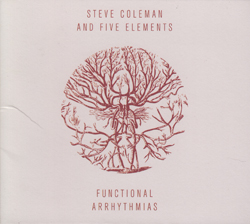
Alto saxophonist Steve Coleman takes his long-standing M-Base band Five Elements ongoing study into patterns found in nature in an album of music reflecting the irrational rhythms found in healthy human heartbeat patterns.
In Stock
Quantity in Basket: None
Log In to use our Wish List
Shipping Weight: 3.00 units
EU & UK Customers:
Discogs.com can handle your VAT payments
So please order through Discogs
Sample The Album:
Steve Coleman-alto saxophone
Jonathan Finlayson-trumpet
Anthony Tidd-bass
Sean Rickman-drums
Miles Okazaki-guitars
Click an artist name above to see in-stock items for that artist.
UPC: 808713004724
Label: Pi Recordings
Catalog ID: pi 47
Squidco Product Code: 17468
Format: CD
Condition: New
Released: 2013
Country: USA
Packaging: Digipack
Recorded at Systems Two, Brooklyn, NY on March 8th and 9th, 2012 by Joseph Marciano, Max Ross, and Rich Lamb. Recorded at James L. Dolan Music Recording Studio at NYU Steinhardt School, New York on September 29th and 30th, 2012 by Paul Geluso.
"Pi Recordings is pleased to announce our first release of 2013, Steve Coleman & Five Elements Functional Arrhythmias. Functional Arrhythmias is the latest and most ambitious chapter in alto saxophonist Steve Coleman's ongoing study into patterns found in nature - in this case the various rhythms found inside the human body - and using them as the building blocks for his highly individual musical language. The new CD follows on the critically acclaimed Harvesting Semblances and Affinities and The Mancy of Sound, both released on Pi Recordings. To help realize his latest musical vision, Coleman has revamped his band Five Elements by reenlisting two veterans: Sean Rickman on drums and Anthony Tidd on bass. Together with long-time member Jonathan Finlayson - one of the most acclaimed young trumpeters on the jazz scene - and guitarist Miles Okazaki, they possess the combination of intuition and experience to capture Coleman's music in all its labyrinthine beauty.
The title of the album refers to the irrational rhythms found in healthy human heartbeat patterns and many of its compositions utilize the heartbeat pulse (ternary or triple pattern). Coleman has long been fascinated with time-related themes, and Functional Arrhythmias is his attempt at creating a musical analogy of the rhythmic interaction between the circulatory, nervous, respiratory, and other biological systems of the human body. He also examines the effect of sensory stimuli on these relationships, and reflects them in the music. He credits the master percussionist and polymath Milford Graves -- whose pioneering research into heart sounds and rhythms point to the connection between the human soul, biology and music -- for providing the inspiration for his explorations.
Coleman employs an unusual process in creating these compositions: It usually starts with him improvising alone - playing the saxophone and/or singing as he simultaneously beats out rhythms - while visualizing some of the physical principles (shape, appearance, energy, vibration, movement, effect, etc.) of biological functions. These spontaneous sketches are then transcribed and other improvised sections overlaid to arrive at the final composition. The resulting layers of melodic and rhythmic counterpoint exhibit all the hallmarks of Coleman's best work.
Five Elements, Coleman's band since 1981, continues to be his primary vehicle for the expression of his music. This version of the band is notable for the return of Anthony Tidd on electric bass and Sean Rickman on drums, both of who first played with the band over 15 years ago. They bring a thorough understanding of Coleman's systems and a muscular sense of groove to the music, but are at the same time flexible enough to navigate the complex rhythmic twists and turns that are characteristic of this music. The rest of the band is comprised of Jonathan Finlayson, who has been a member of Five Elements since 2000 when he was still a teenager, and Miles Okazaki, a relative newcomer who has released three well-received albums of his own as a leader. Finlayson, who is one of the most sought after trumpeters for his musicality and ability to tackle cutting-edge musical concepts, has appeared on an astonishing three New York Times #1 albums of the year in the last four years, including Coleman's Harvesting Semblances and Affinities, Steve Lehman's Travail, Transformation, and Flow, and David Virelles's Continuum. He is also a member of guitarist Mary Halvorson's quintet and appears on her acclaimed recordings Saturn Sings and Bending Bridges. He will release his debut recording as a leader, Moment and the Message on Pi Recordings in May.
For a quarter century Coleman has been known as the key proponent of M-Base, a musical and philosophical movement that incorporates elements from the folkloric music of the African diaspora fused with musical ideas influenced by ancient metaphysical concepts and patterns found in nature. He has conducted extensive research trips to Cuba, Ghana, Brazil, India, Indonesia, Senegal, Algeria, Ivory Coast and Tunisia to collaborate and learn from musicians from different cultures. Pianist and composer Vijay Iyer said in an article in The Wall Street Journal: "It's hard to overstate Steve's influence. He's affected more than one generation, as much as anyone since John Coltrane."
Coleman has often stated his desire "to be able to look at a mountain and literally play the mountain" and "to look at the flight pattern of a bee, the flight pattern of a bird, and play that. Or have that directly influence my music, so almost be able to look at nature as one big gesture." Of his latest endeavor, Coleman says: "All of the activities of the human body are connected in a miraculous fashion, like a giant musical composition that is constantly and spontaneously changing based on interactions with its environment." Functional Arrhythmias is the latest in his fascinating and never-ending quest to express the relationship of mankind to everything else through his music."-Pi Recordings
Artist Biographies
• Show Bio for Steve Coleman "Steve began playing music just days before his 14th birthday as a freshman at South Shore High School on the south side of Chicago. His first instrument was violin but later that year he switched to the alto saxophone. For three years Steve studied the basics of music and saxophone technique, then he decided that he wanted to learn how to improvise. Looking for the best improvising musicians to listen to is what brought Steve to the music of Charlie Parker, although it helped that his father listened to Parker all the time. After spending two years at Illinois Wesleyan University Steve transferred to Roosevelt University (Chicago Music College) in downtown Chicago in order to concentrate on Chicago's musical nightlife. Specifically Coleman had been introduced to the improvisations of Chicago premier saxophonists Von Freeman, Bunky Green, Gido Sinclair, Sonny Greer and others and he wanted to hang out and learn from these veterans. By the time he left Chicago in May 1978, he was holding down a decent gig leading a band at the New Apartment Lounge, writing music, playing Parker classics, and getting increasingly dissatisfied with what he felt was a creative dead end in the Chicago scene. After hearing groups from New York led by masters like Max Roach, Art Blakey, Woody Shaw, The Thad Jones-Mel Lewis Orchestra, Sonny Rollins, etc. come through Chicago with bands that featured great players with advanced musical conceptions, Steve knew where he wanted to go next. He felt he needed to be around this kind of atmosphere in order to grow musically. Hitchhiking to New York and staying at a YMCA in Manhattan for a few months, he scuffled until he picked up a gig with the Thad Jones-Mel Lewis Big Band, which led to stints with the Sam Rivers Big Band, Cecil Taylor's Big Band and others. Soon he began cutting records as a sideman with those leaders as well as pivotal figures like David Murray, Doug Hammond, Dave Holland, Mike Brecker and Abbey Lincoln. However it was really the influence of Von Freeman and Bunky Green in Chicago, Thad Jones, Sam Rivers, Doug Hammond in New York and listening to recordings of past improvising masters and music from West Africa that got Coleman turned around musically. . The most important influences on his music during this time were listening to tenor saxophonist Von Freeman (who primarily influenced Coleman as an improviser), saxophonist Sam Rivers (who influenced Steve compositionally) and drummer/composer Doug Hammond (who was especially important in Steve's conceptual thinking). Even playing with these masters only went part of the way toward paying the rent, and so for the next four years Coleman spent a good deal of time playing in New York City's streets for small amounts of money with a street band that he put together with trumpeter Graham Haynes, the group that would evolve into the ensemble Steve Coleman and Five Elements. It is this group that would serve as the flagship ensemble for most of Steve's activities. Within a short time the group began finding a niche in tiny, out-of-the-way clubs in Harlem and Brooklyn where they continued to hone their developing concept of improvisation within nested looping structures. These were ideas based on how to create music from one's experiences, which became the foundation which Coleman and friends call the M-Base concept. However, unlike what most critics wrote this concept was philosophical, Coleman did not call the music itself M-Base. After reaching an agreement with the West German JMT label in 1985, Steve and his colleagues got their chance to document their emergent ideas on three early Coleman-led recordings like Motherland Pulse, On The Edge Of Tomorrow, and World Expansion. The late 1980s found Coleman working to codify his early ideas using the group Steve Coleman and Five Elements and working with a collective of musicians called the M-Base Collective. As his ideas grew Steve also learned to incorporate various forms of research to expand his awareness, these techniques included learning to program computers to be used as tools to further develop his conception. He developed computer software that he referred to as The Improviser, which was able to spontaneously develop improvisations, harmonic structures and drum rhythms using artificial intelligence based on certain musical theories that Steve had developed over the years. It was also during this time that Coleman came into contact with the study of the philosophy of ancient cultures. This began in the late 1970s with his listening to music from West Africa and studying about he African Diaspora, but in the 1980s Steve began to study and read about the ideas behind the music. He began to see that there was a sensibility that connected what he was interested in today with the ancient cultures of the past. All of these ideas are documented on his recordings in the form of a sonic symbolic language. These emerging concepts were documented on Steve's subsequent albums Sine Die (recorded 1987-88 on the Pangaea Label), Rhythm People (1990), Black Science (1990), Drop Kick (1992), The Tao of Mad Phat (1993), and the first album of the entire M-Base Collective called Anatomy of a Groove (1991-1992); all except Sine Die on BMG Records. These recordings were the beginning of what Steve considers to be the transition to his mature period (1987-1990). However, not being satisfied with reading and listening to recordings, Coleman embarked on the first of many research trips, first going to Ghana in December 1993 to January 1994 to study the relationship of language to music. One of the places that he traveled to was a small village called Yendi to check out the Dagbon people who have a tradition of speaking through their music using a drum language that still survives today. Steve had certain ideas about the role of music and the transmission of information in ancient times and he wanted to verify his speculations. This trip had a profound effect on Coleman's music and philosophy. Upon returning to the United States Steve recorded Def Trance Beat and A Tale of 3 Cities on BMG Records, however the impact of the ideas that he was introduced to in Ghana would not be fully expressed in his work until late in 1994 after meeting the Kemetic (i.e. related to ancient Egypt) philosopher Thomas Goodwin, whose influence on Steve's work was profound and far reaching. In June 1994 Steve formed the group Renegade Way, at that time consisting of Steve Coleman and Greg Osby on alto saxophones, Joe Lovano and Craig Handy on tenor saxophones, Kenny Davis on bass and Yoron Israel on drums. This group also did its first tour of Europe in late august 1995 (with Bunky Green on alto taking Greg's place and Ralph Peterson on drums instead of Yoron). A later version of this group consisted of Steve Coleman and Greg Osby on alto saxophones, Gary Thomas and Ravi Coltrane on tenor saxophones, Anthony Tidd on Bass and Sean Rickman on drums, however this group has never recorded a commercially released CD. Representing both a summation of the previous period and the beginning of another phase is the three CD box set entitled Steve Coleman's Music - Live at the Hot Brass released by BMG France. Each CD in the box set was recorded live in March 1995 in Paris and features one of Coleman's groups, Curves of Life by Steve Coleman and Five Elements, The Way of the Cipher by Steve Coleman and Metrics and Myths, Modes and Means by Steve Coleman and The Mystic Rhythm Society. This last CD was directly influenced by the trip to Ghana, which together with philosophical studies with Thomas Goodwin, occupied Steve's investigations for the remainder of the 1990s. Together with an experimental ensemble put together called Steve Coleman and The Secret Doctrine, that brought the total number of group projects that Steve was involved in to five. The year 1995 was an important year for Steve. He began by organizing a trip that would make a profound impact on his music. While pursuing his philosophical studies and learning more about the transmission of these ideas through music, Steve began to plan to investigate an idea that he had been thinking about for at least 7 years. In an effort to follow the development of certain philosophical and spiritual ideas obtained by studying ancient cultures (primarily ancient Egypt) and following up on the 1993-94 research trip to Ghana, Africa, Steve wanted to meet and collaborate in a creative way with musicians who were involved in certain ancient philosophical/musical traditions which come out of West Africa. One of his main interests was the Yoruba tradition (predominantly out of western Nigeria), which is one of the Ancient African Religions underlying Santeria (Cuba and Puerto Rico), Candomblé (Bahia, Brazil) and Vodun (Haiti). Steve decided to go to these places and investigate the method by which the ideas of these traditions were transmitted through music. First stop, Cuba! In Cuba Steve found that the situation was more complex than he had imagined for the people had preserved more than one African culture and these were mixed together under the general title of Santeria. There are the Abakua societies (Ngbe), the various Arara cults (Dahomey), the Congo traditions such as nganga, mayombe and palo monte as well as the Yoruba traditions. But he did find one group called AfroCuba de Matanzas who specialized in preserving all of the above traditions as well as various styles of Rumba. It was to the town of Matanzas that Steve headed in January of 1996 in order to study the music and also contact AfroCuba de Matanzas and arrange a meeting with the leader of this group, Francisco Zamora Chirino (otherwise known as Minini). Minini was also excited about the project and so it was arranged that the collaboration would take place in February during the time of the Havana Jazz Festival in order to give the expanded group a chance to perform before the Cuban public. In February of 1996 Steve rented a large house in Havana and along with a group of 10 musicians and dancers, a three-person film crew and the group AfroCuba de Matanzas (who had been bused in from Matanzas) the collaboration was started. For 12 days the two groups hung out together, worked, practiced and conceptualized in order to realize their goal. After their performance at the Havana Jazz Festival the musicians went into a Egrem Studios in Havana and recorded the collaboration. The results of this effort are preserved on a recording made for the BMG France recording company called The Sign and The Seal by Steve Coleman and The Mystic Rhythm Society in collaboration with AfroCuba de Matanzas. Although this project went well, Coleman viewed the results as he did every other project he has been involved in, as a step along a certain path. It did demonstrate another step in the evolution of his music, but it is being on the path that is important to Steve. It also shows that there is a more obvious connection than is generally thought between the creative music of today and the dynamic musical traditions of African peoples living in various parts of the earth. The combined group of Steve Coleman and The Mystic Rhythm Society in collaboration with AfroCuba de Matanzas did a major tour of Europe in June-July of 1997. This year also saw Steve form a large group (big band) called Steve Coleman and The Council of Balance. This group recorded a CD called Genesis which was released as part of the two CD set released by BMG France called Genesis and The Opening of The Way (the second CD in the set featuring Steve Coleman and Five Elements). 1997-1999 saw a continuation of the projects involving cultural exchange with musicians around the world. Partially funded by a grant from Arts International (1997), Steve took a group of musicians from America and Cuba to Senegal to collaborate and participate in musical and cultural exchanges with the musicians of the local Senegalese group Sing Sing Rhythm. Using his own funds he also led his group Five Elements to the south of India in January-February of 1998 to participate in a cultural exchange with different musicians in the Carnatic music tradition. Steve and his group also gave workshops in the Brahavadhi Center headed by the renowned musicologist Dr. K. Subramanian. What Steve learned on the trip to India (along with a research trip to Egypt the preceding month) helped to substantiate the knowledge of the ancient systems that Steve had been studying. These trips were helpful in supplying the additional information necessary for Steve to continue his studies, which he hopes to express through his own music. Two of Steve's Five Elements recordings released by BMG France, The Sonic Language of Myth (1999) and The Ascension to Light (2000) are a direct result of these studies. This work came to the attention of IRCAM (the world renown computer-music research center in Paris France) leading to Coleman receiving a major commission from IRCAM to further develop his ideas, in the form of interactive computer software, at the IRCAM facilities in Paris with the aid of programmers Sukandar Kartadinata, Takahiko Suzuki, Gilbert Nouno and IRCAM technology. A premier concert in June 1999 featuring Steve Coleman and Five Elements interacting with what Steve calls his Rameses 2000 computer software program was the public result of this commission. In 2000-2001 Steve withdrew from performing/recording and began study sabbatical. During this time he traveled extensively to India, Indonesia, Cuba and Brazil and continued much of his research as a music professor at the University of California at Berkeley and at CNMAT (the Center for New Music and Technology). He also overhauled his business organization and signed with another record company from France called Label Bleu. After returning to the world of performing Coleman recorded a live double-CD set called Resistance Is Futile (2001) on Label Bleu records. In 2002 Steve Coleman and Five Elements recorded a CD that is available free of charge on Steve's website (www.m-base.com) called Alternate Dimension Series I. Also recorded in this year is the On The Rising Of The 64 Paths on Label Bleu records. Lucidarium was recorded in 2003 (also on Label Bleu records). For this CD Steve and his group explore the dimensions of an alternate tonal and rhythmic system, continuing the spirit of research and experimentation that marks all of his projects. Weaving Symbolics, recorded in 2005, similarly explores the world of form. Much of the important segments of this activity from January 1996 on have been preserved in the form of a documentary film shot by Eve-Marie Breglia based on Steve's music and the theme of cultural transference tentatively entitled Elements on One scheduled for release in 2004-05. 2006-2007 saw a flurry of activity, with Steve releasing his first solo saxophone recording called Invisible Paths (on the Tzadik label). Also recorded during this time were Harvesting Semblances and Affinities and The Mancy of Sound, but these recordings were not released until 2010 and 2011 respectively, after Steve had made a distribution deal with Pi Recordings. All three of these recordings are connected conceptually in that they deal with both an expanded tonal and orchestration conception. This also coincided with Steve's 2006 meeting with the great Danish composer Per Nørgård, who has had some influence on Steve's orchestration concepts. In 2012 Steve altered his approach to being creating completely spontaneous compositions, and later orchestrating them. Functional Arrhythmias was the first recording to use this approach, which involved spontaneously composing in a near-trance state. This was also first recording to be based on the cyclical movements within the human body, a idea that was influenced by Steve's meeting and conversations with percussionist, polymath and modern shaman Milford Graves in 2011. While on a study sabbatical in 2013, Steve received a vision in a half-waking state, and began work on a 2-year project that culminated in the 2014 large ensemble recording entitled Synovial Joints (released April 28 2015). This was a continuation of the spontaneous composition approach, but further developed with much more orchestration of musical colors involved. A further development of this approach resulted in the 2017 recording Morphogenesis, by Steve's latest ensemble; Steve Coleman's Natal Eclipse. Scheduled for a release in the near future is an upcoming recording of Steve Coleman and Five Elements, recorded live at the Village Vanguard in May of 2017. Steve does not think of these concepts, groups, projects and recordings as separate events, but as one connected learning experience. Since 1994 Steve has done a series of performance and educational residencies around the United States and in many other countries (Cuba, India, Ivory Coast, Senegal, Brazil, France) through his non-profit, M-Base Concepts, Inc. This non-profit also has a an online music community website; m-base.net, which promotes educational activities through various multimedia formats and interactive media events." ^ Hide Bio for Steve Coleman • Show Bio for Jonathan Finlayson "Jonathan Finlayson has been recognized by the New York Times as "...an incisive and often surprising trumpeter," who is "...fascinated with composition." Born in 1982 in Berkeley, CA, Finlayson began playing the trumpet at the age of ten in the Oakland public school system. He came under the tutelage of Bay Area legend Robert Porter, a veteran trumpeter from the bebop era who took Finlayson under his wing; he was often seen accompanying Porter on his gigs about town and sitting in on the popular Sunday nights jam session at the Bird Cage. He subsequently attended the New School for Jazz and Contemporary Music where he studied with Eddie Henderson, Jimmy Owens and Cecil Bridgewater. Finlayson is a disciple of the saxophonist/composer/conceptualist Steve Coleman, having joined his band Five Elements in 2000 at the age of 18. He is widely admired for his ability to tackle cutting-edge musical concepts with aplomb. Finlayson has performed and recorded in groups led by Steve Lehman, Mary Halvorson, Craig Taborn, Henry Threadgill and played alongside notables such as Von Freeman, Jason Moran, Dafnis Prieto and Vijay Iyer." ^ Hide Bio for Jonathan Finlayson • Show Bio for Anthony Tidd "Anthony Tidd is a composer, producer, audio engineer, educator and musician. He plays bass, guitar and piano/keyboards. Tidd's musical palette as a composer and performer is diverse. He holds a deep knowledge of jazz, R&B, Hip-hop, classical, and new music, as well as a particular affinity for creative improvisation. Born and raised in the United Kingdom, he has been living and working in the United States since 1997. He has performed and toured all over the globe with artists such as Steve Coleman, The Roots, MeShell Ndegeocello, +Gang Starr, Geopelle, Common, Greg Osby, Marsha Ambrosius, Bhekki Mseleku, Wayne Krantz, Rudresh Mahanthappa, Steve Williamson, Ari Hoenig, Ursula Rucker and Dap Theory. Tidd has produced recordings for Jill Scott, Macy Gray, Zap Mama, Lady Gaga, Pink, The Jazzyfatnastees, Ursula Rucker, The Black Eyed Peas, Joy Denalane, and the Grammy Award-winning hip-hop collective The Roots, among others. He has worked with such other artists as Bilal, Soul Asylum, and Erykah Badu. He has composed music for the United Nations, the BBC, American Airlines, the London Philharmonic Orchestra, as well as film & television. Tidd attended the Newhan Academy of Music in London, Thurrock College of Music, as well as Goldsmiths University of London, where he received a B.A. in Composition & Music technology. As a student, he studied composition, upright and electric bass, piano, music technology, and film scoring. Tidd has taught music and music technology at the Oval House Theatre (London), St. Paul's Way School (London) and has held master classes and collaborated with the London Symphonietta, NYU, U.C Berkley, The Berlin Philharmoniker, The Pavorotti Center (Mostar), Durban University (South Africa), and various others. His own musical project, Quite Sane's last release, entitled "The Child of Troubled Times" has garnered critical acclaim. Tidd currently curates "Sittin' In Jam Sessions," a performance series at the Kimmel Center For The Performing Arts in Philadelphia, where he also serves as director of the Creative Music Program, A position he has held since 2010." ^ Hide Bio for Anthony Tidd • Show Bio for Sean Rickman "Sean Rickman (born October 16, 1970) is an American drummer, vocalist, guitarist, bassist, songwriter, producer and recording artist from Washington, DC. He is best known for his work with Shawn Lane, Garaj Mahal, Dapp Theory, Steve Coleman, Maxwell, Meshell Ndegeocello, Blacksheep, Phil Upchurch, David Fiucynski & Screaming Headless Torsos, Kai Eckhardt, Anthony Tidd's Quite Sane, K'Alyn, Angela Bofill and George Duke. Rickman was lead singer and drummer for Garaj Mahal from 2007-2011 and currently his DC Rock band Big Mouth featuring guitarist Leonard Stevens. He was also featured alongside Herbie Hancock, Wayne Shorter and Marcus Miller on the Tribute To Miles 2011 tour. Currently Rickman tours and records with alto saxophonist Steve Coleman, bassist Kai Eckhardt, guitarist Miles Okazaki and others. He dedicates most of his off road time to his instructional site. Rickman releases self produced albums under his artist name The Rick performing all the vocals and all the instruments. He is developing live performances as the frontman of his power trio." ^ Hide Bio for Sean Rickman • Show Bio for Miles Okazaki "Miles Okazaki is an American musician based in New York City. He is known for his technical command of the guitar, his rhythmic approach to improvisation and composition, and his work in contemporary music theory. Okazaki grew up in Port Townsend, Washington, a small town near the Olympic Mountains in the Pacific Northwest. He got his first classical guitar at age 6, and began playing regular gigs on electric guitar by age 14, after studying for several years at the Centrum Jazz Workshop. He received many awards as a guitarist throughout his early years, and eventually placed 2nd in the Thelonious Monk International Guitar Competition. Okazaki moved to New York City in 1997 to pursue a career in music and begin writing his own material. His teacher on guitar at this time was Rodney Jones, who recommended him for his first gig, with Stanley Turrentine. Okazaki spent four years on the road with vocalist Jane Monheit, while also writing and rehearsing the music for his first album, Mirror, which was released independently. The album received a "Critics Pick" in the New York Times, calling it "a work of sustained collectivity as well as deep intricacy." He expanded to a septet for his second album, Generations, described by pianist Vijay Iyer "the sonic equivalent of Escher or Borges, but with real emotional heft,". His third album, Figurations, was recorded live with a quartet, and was selected as one of the New York Times top ten albums of 2012, described by Ben Ratliff as "slowly evolving puzzles of brilliant jazz logic." In January of 2016 Okazaki recorded a new album, Trickster, that will be released later this year. Okazaki wrote, produced, and illustrated these albums. As a sideman, Okazaki works in many areas, ranging from Standard repertoire to experimental music. Recently he has been seen most frequently as the guitarist for Steve Coleman and Five Elements. In the last few years, he has worked with a wide variety of artists including Kenny Barron, Jonathan Finlayson, Amir El Saffar, Adam Rudolph, Dan Weiss, Linda Oh, Darcy James Argue, Jane Monheit, Vijay Iyer, Francois Moutin, Doug Hammond, Carl Allen, Ohad Talmor, Mary Halvorson, John Zorn, Jen Shyu, Mark Giuliana, Patrick Cornelius, Rajna Swaminatham, Matt Mitchell, Craig Taborn, Tony Moreno, Ben Wendel, Donny McCaslin, and many others. Okazaki currently teaches guitar at the University of Michigan. His first book, Fundamentals of Guitar, was released in 2015. He has also taught at the Banff Institute, The New School, Queens College, The Juilliard School, Amsterdam Conservatory, and many other institutions. Outside of guitar, his past teachers include Anthony Davis (composition), Ganesh Kumar (Carnatic percussion), and Kendall Briggs (counterpoint). His awards and grants include Chamber Music America's "New Works" (2007), Chamber Music America's "French-American Jazz Exchange" (2009), the Jazz Gallery and Jerome Foundations Residency Commission (2010), the American Music Center's Composer Assistance Program (2011), the Mid-Atlantic Arts Foundation's US Artists International grant (2012), the Rockefeller Brother's Fund Artist Residency (2012), and the Jazz Gallery Mentorship program (2015). He holds degrees from Harvard University, Manhattan School of Music, and The Juilliard School, and lives in Brooklyn, NY." ^ Hide Bio for Miles Okazaki
12/9/2025
Have a better biography or biography source? Please Contact Us so that we can update this biography.
12/9/2025
Have a better biography or biography source? Please Contact Us so that we can update this biography.
12/9/2025
Have a better biography or biography source? Please Contact Us so that we can update this biography.
12/9/2025
Have a better biography or biography source? Please Contact Us so that we can update this biography.
12/9/2025
Have a better biography or biography source? Please Contact Us so that we can update this biography.
Track Listing:
1. Sinews 6:53
2. Medulla-Vagus 6:33
3. Chemical Intuition 3:59
4. Cerebrum Crossover 6:46
5. Limbric Cry 5:38
6. Cardiovascular 2:34
7. Respiratory Flow 3:51
8. Irregular Heartbeats 3:59
9. Cerebellum Lean 5:26
10. Lymph Swag (Dance of the Leukocytes) 3:53
11. Adrenal, Got Ghost 3:08
12. Assim-Elim 3:32
13. Hormone Trig 4:30
14. Snap-Sis 3:08
Improvised Music
Jazz
NY Downtown & Metropolitan Jazz/Improv
Pi Records
Staff Picks & Recommended Items
Top 40 for 2013
Quintet Recordings
Search for other titles on the label:
Pi Recordings.


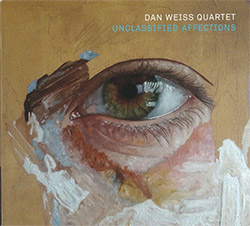
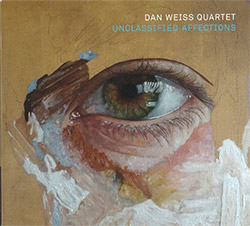
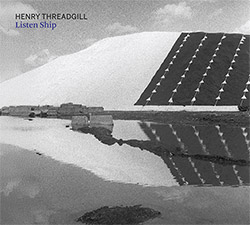
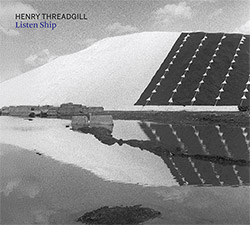
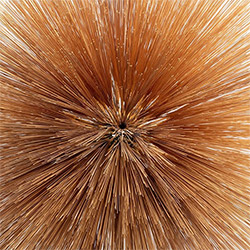

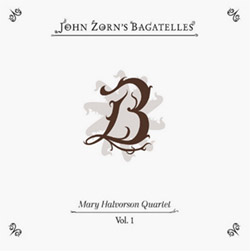
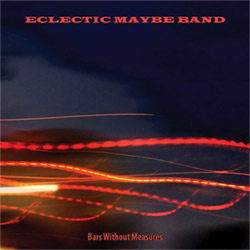

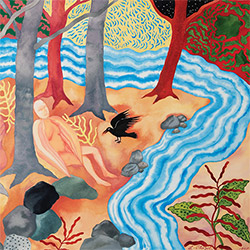
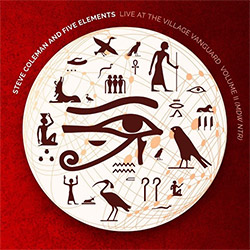

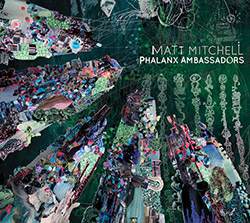
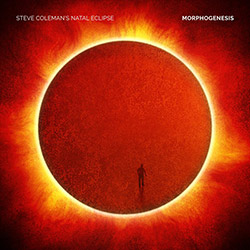
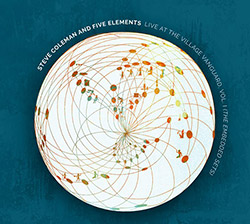
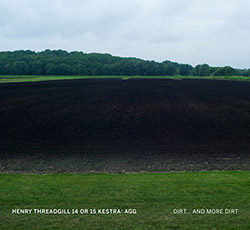
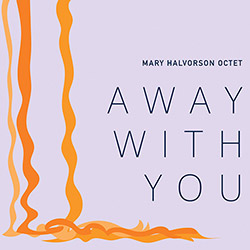
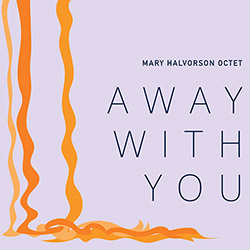
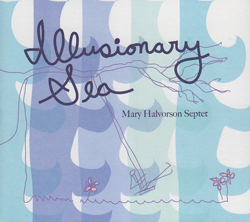
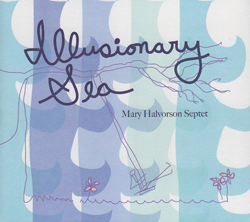
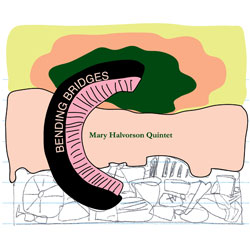
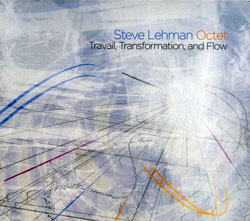

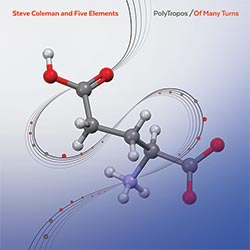
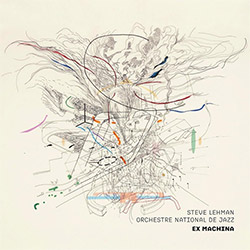
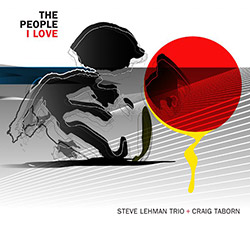

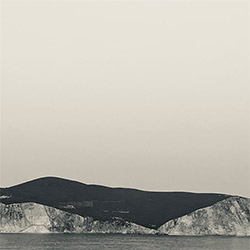

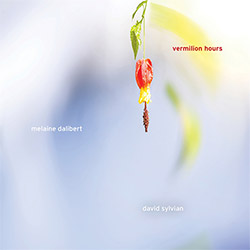
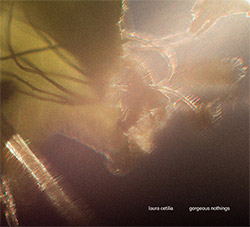
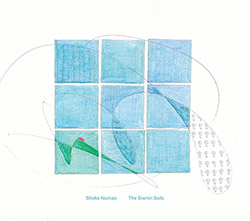

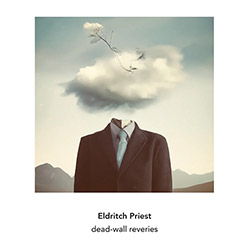


![Agnel, Sophie: Learning [VINYL]](https://www.teuthida.com/productImages/misc4/36841.jpg)
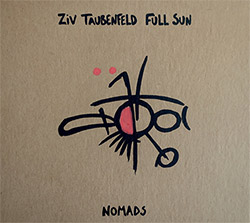
![Monaco, Amanda (w/ Michael Attias / Sean Conly / Satoshi Takeishi) : Deathblow [VINYL]](https://www.teuthida.com/productImages/misc4/36956.jpg)
![Frey, Jurg with ensemble]h[iatus: Je Laisse A La Nuit Son Poids D](https://www.teuthida.com/productImages/misc4/36988.jpg)
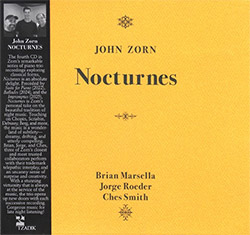
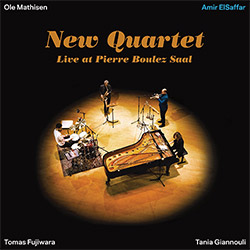
![ElSaffar, Amir / New Quartet : Live at Pierre Boulez Saal [VINYL]](https://www.teuthida.com/productImages/misc4/36830.jpg)
![Zorn, John: The Song of Songs [CD + CD BOOK]](https://www.teuthida.com/productImages/misc4/36923.jpg)
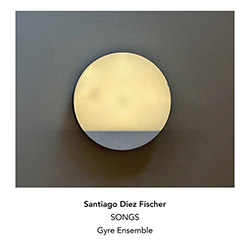

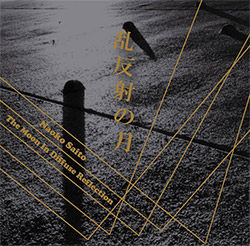

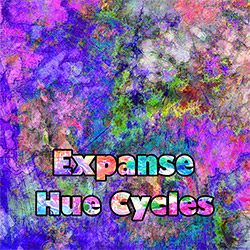
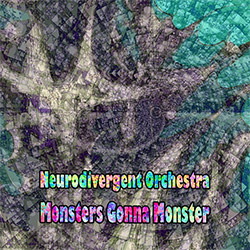
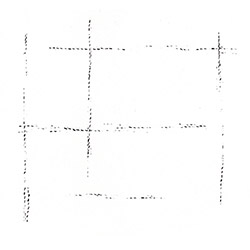


![Musicworks Magazine: #152 Fall 25 [MAGAZINE + CD]](https://www.teuthida.com/productImages/misc4/37004.jpg)
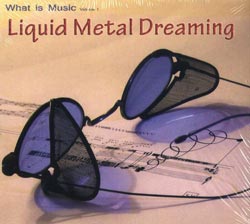

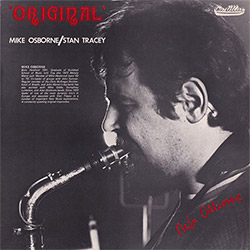
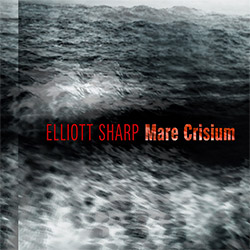
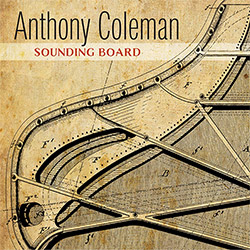
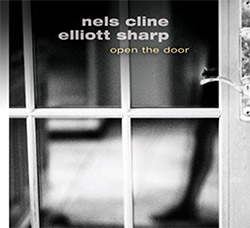
![[ahmed] (Thomas / Grip / Gerbal / Wright): Sama](https://www.teuthida.com/productImages/misc4/36976.jpg)
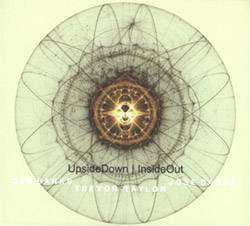

![Cleaver, Gerald / Brandon Lopez / Hprizm: In The Wilderness [COLOR VINYL]](https://www.teuthida.com/productImages/misc4/33060.jpg)
![McPhee, Joe : Defiant Jazz: a Joe McPhee Taster [VINYL]](https://www.teuthida.com/productImages/misc4/36859.jpg)
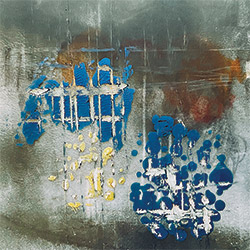
![Mateen, Sabir / Patrick Holmes / Federico Ughi : Survival Situation [LTD VINYL LP + DOWNLOAD]](https://www.teuthida.com/productImages/misc4/29891.jpg)
![Tucker, Dave / Pat Thomas / Thurston Moore / Mark Sanders: Educated Guess Vol. 1 [COLORED VINYL]](https://www.teuthida.com/productImages/misc4/30183.jpg)
![Sarian, Michael / Matthew Putman: A Lifeboat (Part I) [COLORED VINYL]](https://www.teuthida.com/productImages/misc4/30426.jpg)
![Carter, Daniel / Tobias Wilner / Djibril Toure / Federico Ughi: New York United Volume 2 [COLOR VINYL]](https://www.teuthida.com/productImages/misc4/30665.jpg)
![Mela, Francisco feat. Matthew Shipp / William Parker: Music Frees Our Souls, Vol. 1 [BLUE VINYL]](https://www.teuthida.com/productImages/misc4/30999.jpg)
![Heroes Are Gang Leaders: LeAutoRoiOgraphy [COLORED VINYL]](https://www.teuthida.com/productImages/misc4/32253.jpg)
![Carter, Daniel / Matthew Shipp / William Parker / Gerald Cleaver: Welcome Adventure! Vol. 2 [COLOR VINYL]](https://www.teuthida.com/productImages/misc4/32385.jpg)
![Carter, Daniel / Evan Strauss / 5-Track / Sheridan Riley: The Uproar In Bursts Of Sound And Silence [COLORED VINYL]](https://www.teuthida.com/productImages/misc4/32515.jpg)
![Ackerley, Jessica / Patrick Shiroishi / Chris Williams / Luke Stewart / Jason Nazary: SSWAN: Invisibility is an Unnatural Disaster [COLORED VINYL]](https://www.teuthida.com/productImages/misc4/32586.jpg)
![Mela, Francisco feat. Cooper-Moore / William Parker: Music Frees Our Souls, Vol. 2 [COLORED VINYL]](https://www.teuthida.com/productImages/misc4/32735.jpg)
![Amba, Zoh / William Parker / Francisco Mela: O Life, O Light Vol. 2 [COLOR VINYL]](https://www.teuthida.com/productImages/misc4/33059.jpg)
![Dikeman, John / Pat Thomas / John Edwards / Steve Noble: Volume 1 [COLORED VINYL]](https://www.teuthida.com/productImages/misc4/33099.jpg)
![Dikeman, John / Pat Thomas / John Edwards / Steve Noble: Volume 2 [COLOR VINYL]](https://www.teuthida.com/productImages/misc4/33184.jpg)
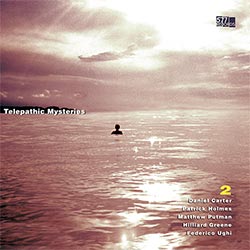

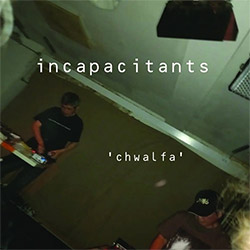
![Genthon, Anouck / Lionel Marchetti: Suite Blanche [2 CDs]](https://www.teuthida.com/productImages/misc4/36642.jpg)
![Toeplitz, Kasper T.: Erosions Programmees [CD + BOOKLET]](https://www.teuthida.com/productImages/misc4/36639.jpg)
![Gate, The : Amost Live [CASSETTE + MAGAZINE]](https://www.teuthida.com/productImages/misc4/36836.jpg)
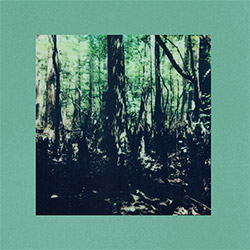

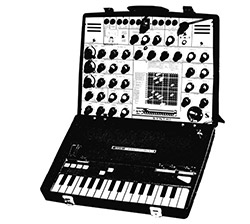
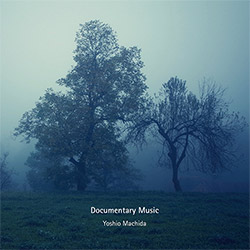
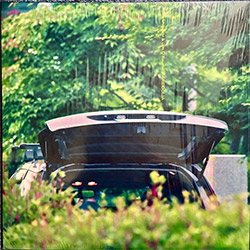

![A Magic Whistle: The Solar Cell [VINYL]](https://www.teuthida.com/productImages/misc4/36658.jpg)
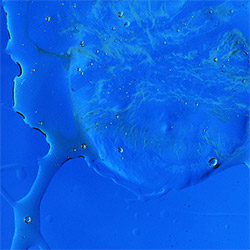
![McGee, Hal: Columbus Expedition [Cassette w/ Download]](https://www.teuthida.com/productImages/misc4/36650.jpg)
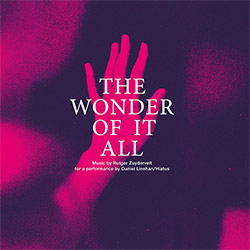

![Jaeger, Kassel: Fernweh [VINYL 2 LPs]](https://www.teuthida.com/productImages/misc4/36541.jpg)
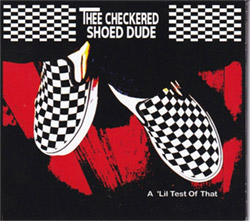
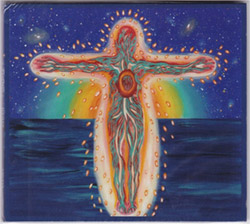
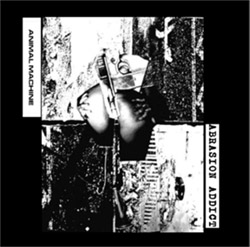


![+DOG+: The Light Of Our Lives [2 CDs]](https://www.teuthida.com/productImages/misc4/36009.jpg)


![Eternities: Rides Again [CASSETTE]](https://www.teuthida.com/productImages/misc4/36247.jpg)

![Lopez, Francisco: Untitled (2021-2022) [2 CDs]](https://www.teuthida.com/productImages/misc4/36438.jpg)


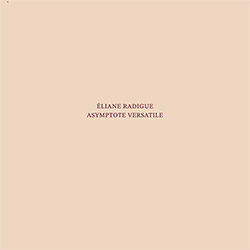
![Frey, Jurg : Composer, Alone [3 CDs]](https://www.teuthida.com/productImages/misc4/36927.jpg)
![Pisaro-Liu, Michael: Within (2) / Appearance (2) [2 CDs]](https://www.teuthida.com/productImages/misc4/36831.jpg)

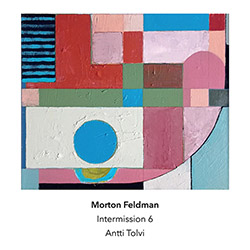
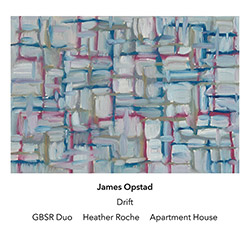
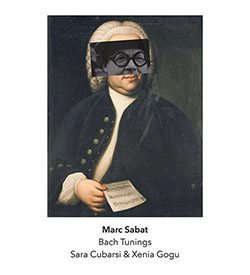
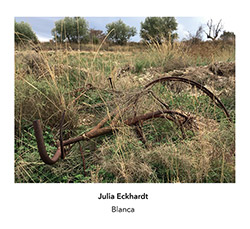

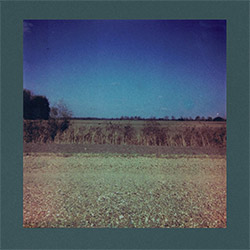
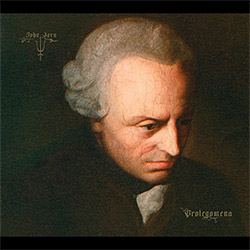
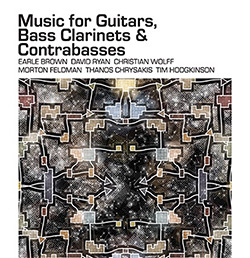
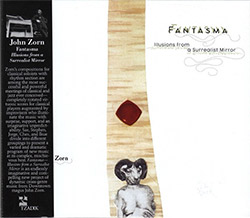
![Musicworks Magazine: #151 Summer 25 [MAGAZINE + CD]](https://www.teuthida.com/productImages/misc4/36559.jpg)

![Brown, Dan / Dan Reynolds: Live At The Grange Hall [unauthorized][CASSETTE]](https://www.teuthida.com/productImages/misc4/36245.jpg)


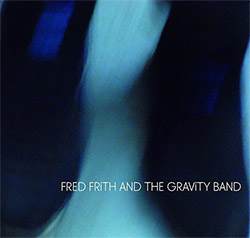
![Coultrain: Mundus [COLORED VINYL]](https://www.teuthida.com/productImages/misc4/33056.jpg)
![Hprizm: Signs Remixed [COLORED VINYL]](https://www.teuthida.com/productImages/misc4/30635.jpg)
![Halls Of the Machine: All Tribal Dignitaries [CASSETTE w/ DOWNLOAD]](https://www.teuthida.com/productImages/misc4/36134.jpg)
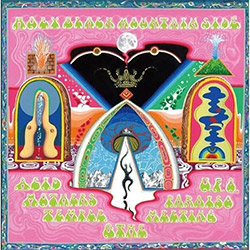
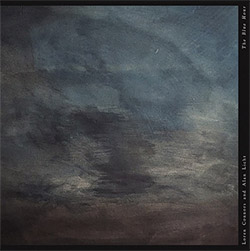
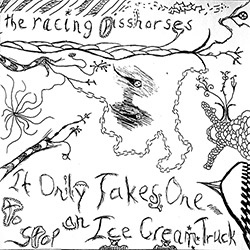
![Koenjihyakkei: Live at Club Goodman [2 CDs]](https://www.teuthida.com/productImages/misc4/36111.jpg)

![Sorry For Laughing (G. Whitlow / M. Bates / Dave-Id / E. Ka-Spel): Rain Flowers [2 CDS]](https://www.teuthida.com/productImages/misc4/35985.jpg)

![Rolando, Tommaso / Andy Moor : Biscotti [CASSETTE w/ DOWNLOADS]](https://www.teuthida.com/productImages/misc4/36106.jpg)


![Electric Bird Noise / Derek Roddy: 8-10-22 [CD EP]](https://www.teuthida.com/productImages/misc4/35970.jpg)







![Elephant9 : Mythical River [VINYL]](https://www.teuthida.com/productImages/misc4/34624.jpg)



![Elephant9 with Terje Rypdal: Catching Fire [VINYL 2 LPs]](https://www.teuthida.com/productImages/misc4/35355.jpg)
![Deerlady (Obomsawin, Mali / Magdalena Abrego): Greatest Hits [VINYL]](https://www.teuthida.com/productImages/misc4/34876.jpg)
![Coley, Byron: Dating Tips for Touring Bands [VINYL]](https://www.teuthida.com/productImages/misc4/17906.jpg)

![Lost Kisses: My Life is Sad & Funny [DVD]](https://www.teuthida.com/productImages/misc4/lostKissesDVD.jpg)